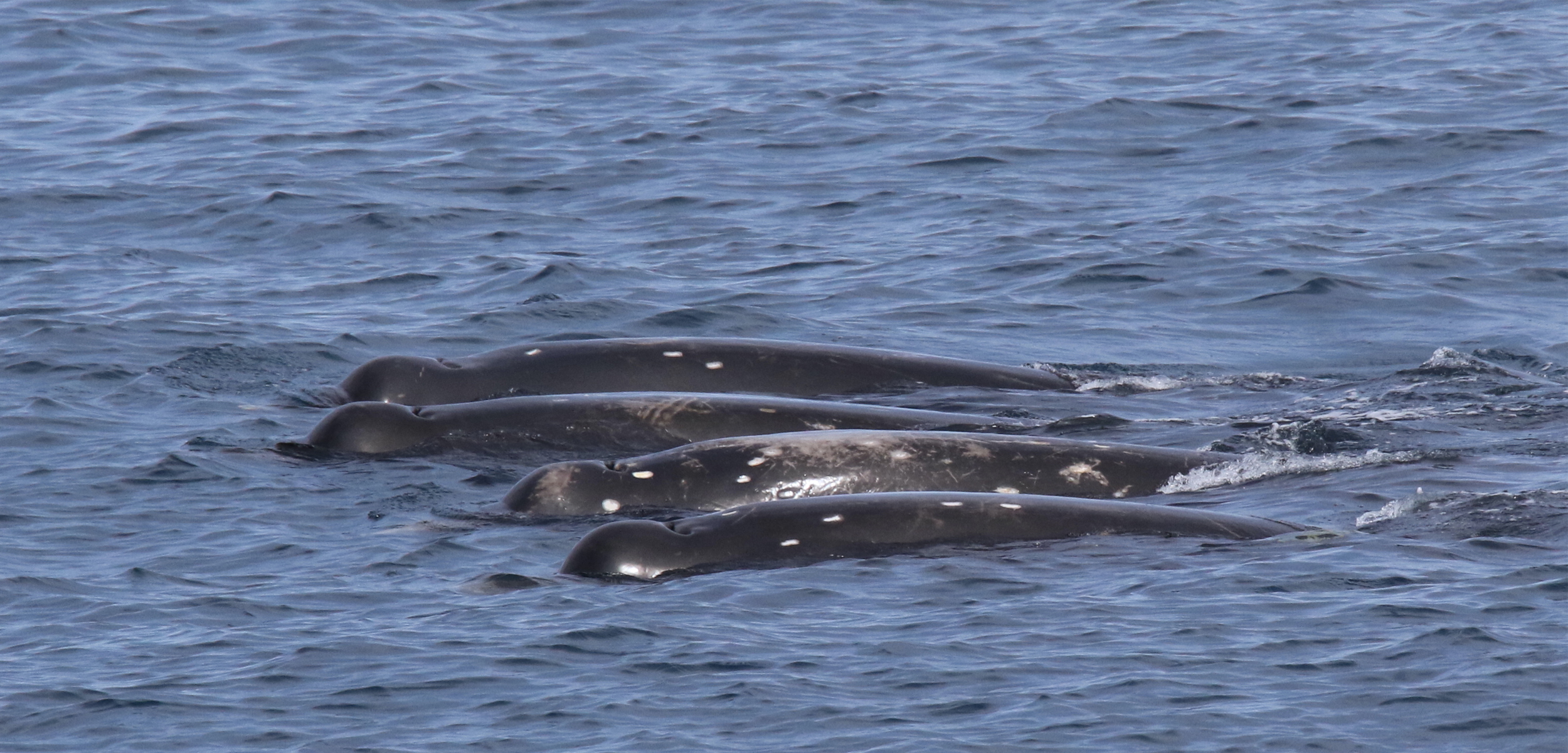Scientists Had Never Seen This Elusive Whale Alive—Until Now
With DNA evidence, scientists confirm the first live sighting of the Sato’s beaked whale, which they previously knew only from whalers’ reports and carcasses.
Article body copy
For the first time, scientists have confirmed a live sighting of an elusive species: the Sato’s beaked whale.
For decades, Japanese whalers have been aware of a black whale that resembles the larger Baird’s beaked whale, a species that they hunt in the Pacific Ocean. But, until recently, the smaller whale was unknown to scientists. In 2019, a Japan-based research team described the species scientifically after analyzing the DNA and physical features of deceased specimens. Still, scientists had yet to see one alive and take the necessary genetic sample to confirm it. Then, during the summer of 2021, in the choppy waters between Hokkaido, Japan, and Russia’s Kuril Islands, a group of researchers studying killer whales spotted something surprising: not one, but 14 of the skittish beaked whales.
“It makes you wonder what all else is out there, swimming in our oceans and maybe right in front of us,” says Robert Pitman, a marine ecologist and beaked whale expert at Oregon State University, who was not involved with the recent Sato’s sighting. He marvels that the species could remain an enigma in Japan, with its thriving community of cetacean researchers.
At just under seven meters long, Sato’s beaked whales are roughly the length of a shipping container. So how did they evade scientists for so long? Pitman explains that beaked whales are “the least-known large animals on the planet.” Most are elusive and live offshore, he says. They rarely vocalize at the surface and spend much of their time at great depths to avoid their main predator, killer whales. Pitman adds that of the nearly 100 recognized species of cetaceans alive today, 24 are beaked whales, but even scientists rarely see them and several species are still only known from strandings.
Sato’s beaked whales were named for Hal Sato, a Hokkaido-based researcher who, in the early 2000s, helped shed light on the unusual whales when she sent photos of stranded individuals to Tadasu Yamada, curator emeritus at Japan’s National Museum of Nature and Science. The species had initially swum under scientists’ radar because of their resemblance to the Baird’s beaked whale, which is more common. Yamada, who coauthored the 2019 species description, explains that while they are related to Baird’s, Sato’s beaked whales are unique. They’re smaller, with a protruding forehead and darker coloring, he says. Karasu, as the species is known to some whalers, translates to “crow” or “raven,” a nod to the whales’ black hue.
These visual cues signaled to the killer whale scientists in 2021 that they had likely encountered Sato’s beaked whales. To confirm their suspicions, they used a crossbow and floating arrow to take a small skin sample from one of the animals for genetic analysis. Compared to previously sequenced DNA from Sato’s beaked whale carcasses, the sample was a perfect match.
So far, scientists know very little about the lives of Sato’s beaked whales, their population status, and how many, if any, are killed annually. But the distinctive white scars they bear may help answer questions about their range. These round bite marks are from cookie-cutter sharks, says Erich Hoyt, a research fellow at Whale and Dolphin Conservation in the United Kingdom, who coauthored the paper announcing the 2021 sighting. To date, Sato’s beaked whales have only been found alive around Japan and eastern Russia. But cookie-cutter sharks typically frequent warmer waters, so the scars suggest the whales might be venturing to—and getting bitten in—tropical locations.
Researchers may be able to crowdsource more information about Sato’s beaked whales, which were deemed near threatened by the International Union for Conservation of Nature in 2020. “If we get help from the general [public], that will help establish some basic knowledge on the species,” Yamada says. He adds that whalers and whale watchers already report unconfirmed observations of Sato’s beaked whales about twice a year. Consolidating sightings and data from both Russia and Japan will give scientists a better idea of the whale’s behavior, population size, and conservation needs.

